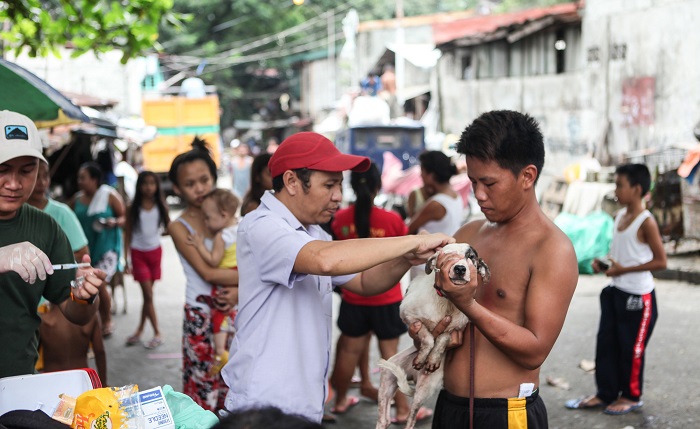What factors affect a rabies control program costs?
A recent article by Elser, et al. in Transboundary and Emerging Diseases provides a helpful analysis of the cost variability involved with expanding or implementing rabies control programs. The study’s researchers, mainly based at the U.S. National Wildlife Research Center in Colorado, compared three different rabies control projects, and identified factors–such as population density, program funding sources, and existing infrastructure–that can impact how much a vaccination program will cost. One of the significant findings was to show how much the factors contributing to program costs can be dependent upon the location of the program site.

In this study, the authors evaluated three canine rabies vaccination demonstration sites that were coordinated by the World Health Organization and supported by the Bill and Melinda Gates Foundation, primarily during the years 2010-2012. These sites were enzootic for rabies and included: 1) KwaZulu-Natal, South Africa (primarily semi-rural) 2) South-Eastern Tanzania (primarily rural), and 3) Cebu, an urban area in The Philippines, a program which also included a rural site. The programs exhibited a wide variation in how well-established their programs were, the level of government investment in rabies control campaigns, and in the population density of the area.
By comparing the cost per dog vaccinated at the three different sites, the authors found that programs operating in areas with lower population density had higher costs. When breaking down the component costs related to vaccination, expenses due to transportation and accommodations contributed most significantly to campaign costs in rural areas due to the need for house-to-house canvasing in areas with low density dog populations. Overall, labor costs were the largest expense for any of the campaigns, regardless of location.
PEP costs were less variable across sites, and population density did not play a role in the expense of providing PEP. Cost comparisons showed that because the biologic itself was such a significant expense, the other factors influencing the cost of PEP were low in comparison.
How well-established a rabies control program is also plays a significant role in how expensive a campaign will be. If a site had been part of an existing rabies control program prior to the new campaign, then expenses related to building physical infrastructure (such as freezers or training materials) were less because these things were already in place. Trained personnel can also be easier to find at locations with pre-existing programs, and programs operating at more well-established sites tend to run more efficiently, also driving down costs.
When governments continue to fund rabies elimination programs over the long term, there is a stronger likelihood that the program will remain in place indefinitely. Sustainable projects that operate over the long-term have reduced costs overall due to the improved operational efficiencies described above.
One drawback of the study was that data collected from each site was not collected in a similar way across sites, making some cost comparisons challenging. For example, only for some sites (The Philippines and southeastern Tanzania) were vaccination costs broken down to the district level, including the cost per dog vaccinated. But this was not available for any of the data collected from the Kwa-Zulu Natal program. Future studies should collaborate with data collection methods so that more in-depth analysis can occur.
Planning rabies control and vaccination campaigns for the first time can be challenging, and requires an understanding of all associated expenses to develop an appropriate budget. Funding underestimations can lead to delays in implementation or inadequate vaccination coverage, resulting in a poor outcome for rabies control in the area. To carry out a successful and efficient campaign, a thorough understanding of the costs associated and the factors affecting those costs is necessary.
Submitted by Laura Baker, GARC, summarized from “Toward canine rabies elimination: Economic comparisons of three project sites” by Elser et al. in Transboundary and Emerging Disease.